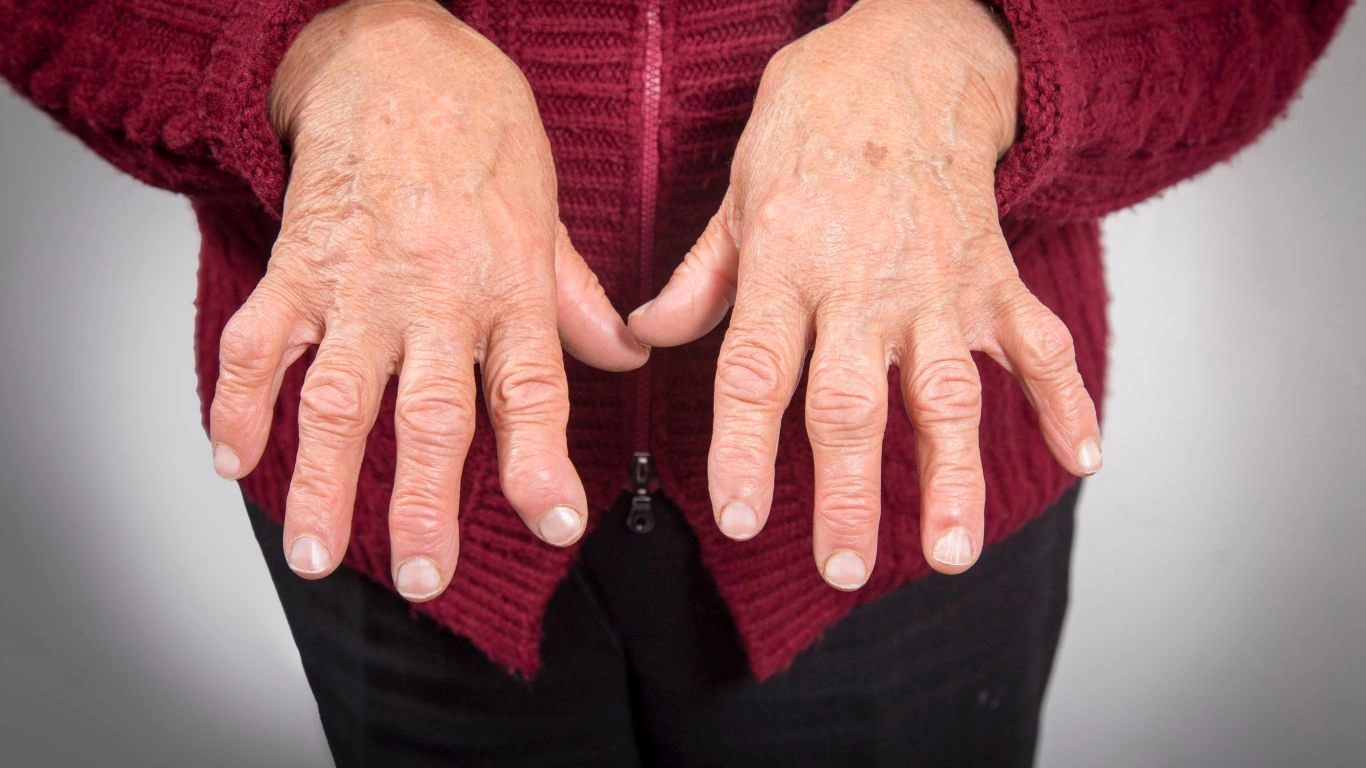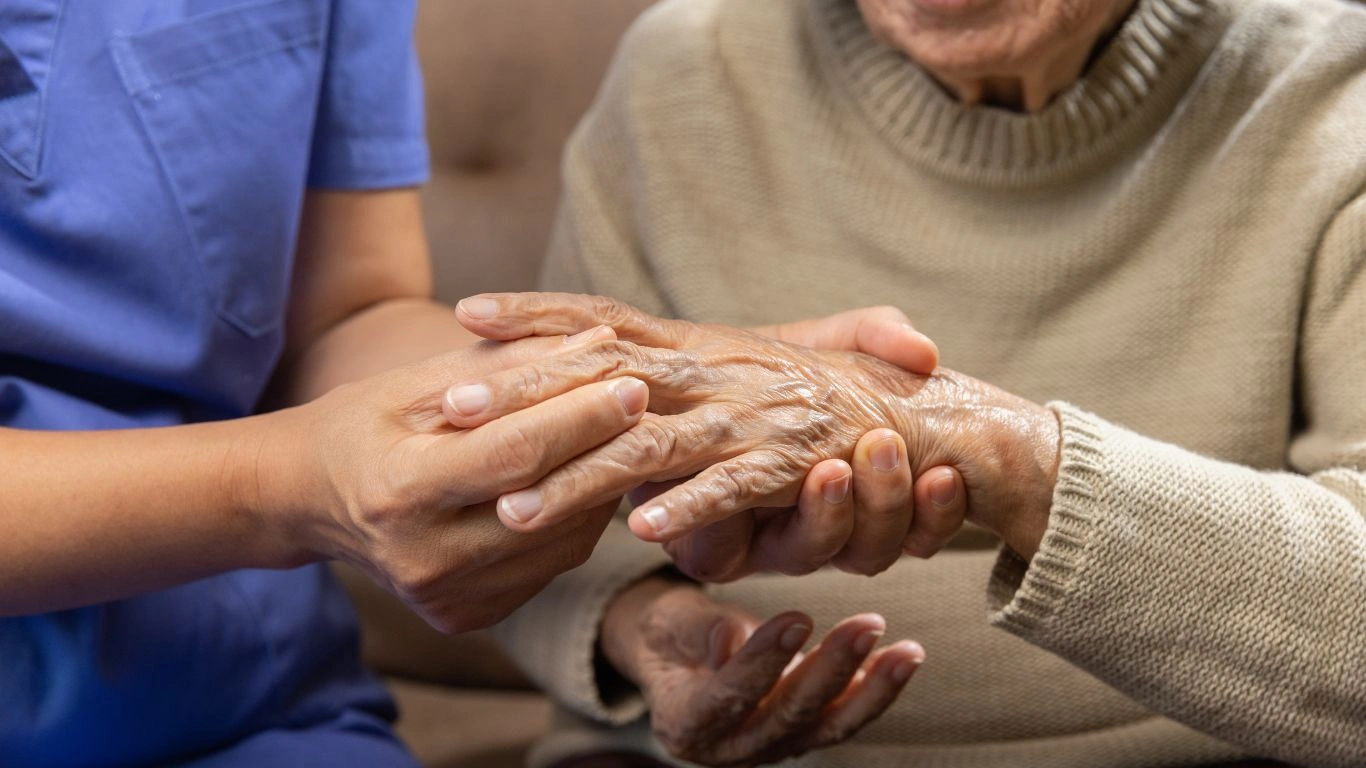Effective Treatments for Rheumatoid Arthritis: Proven Methods to Relieve Pain
Living with rheumatoid arthritis (RA) isn’t just about joint pain — it’s about reclaiming your quality of life. As a rheumatology nurse practitioner, I’ve walked alongside so many patients navigating this chronic illness. I’ve seen the exhaustion in their eyes, the stiffness in their steps, and the frustration of flares that seem to come out of nowhere. But here’s the good news: there *are* effective treatments for rheumatoid arthritis. Proven methods to relieve pain and improve day-to-day life do exist — and they’ve come a long way. So whether you’re newly diagnosed or just trying to find something that works better, let’s dig into some real-world strategies that truly help.
Understanding Rheumatoid Arthritis: It’s More Than Just “Joint Pain”

First things first — RA isn’t your typical wear-and-tear arthritis. This is an autoimmune disease where your immune system, for reasons we still don’t fully understand, starts attacking healthy joint tissue. That leads to swelling, warmth, stiffness (especially in the morning), and fatigue that doesn’t just go away with a nap.
And here’s the kicker: it’s systemic. That means it can affect your lungs, eyes, heart, and even your skin. I’ve had patients who thought they were just “getting older” only to realize that the fatigue and joint discomfort weren’t normal — they were signs of RA all along.
Common Early Symptoms You Shouldn’t Ignore
- Morning stiffness lasting more than 30 minutes
- Swelling in smaller joints — especially fingers, wrists, or toes
- Symmetrical symptoms (both sides of the body)
- Persistent fatigue or malaise
Many of my patients say things like, “I thought I was just tired from work,” or “My hands felt stiff, but I figured it was just cold weather.” Early recognition can make a huge difference in outcomes — trust me on this one.
Effective Treatments for Rheumatoid Arthritis: Proven Methods to Relieve Pain

Let’s dive into the real stuff now — how do we *actually* treat RA? It’s not just about popping pain pills and hoping for the best. Modern RA treatment is strategic, evidence-based, and incredibly personal. What works for one patient might not be ideal for another, and that’s why regular monitoring and open communication with your healthcare provider (nurse practitioners included!) is key.
1. DMARDs (Disease-Modifying Anti-Rheumatic Drugs)
Methotrexate is the old-school MVP of RA treatment. It helps slow the disease down and prevent joint damage — not just manage symptoms. We usually start low and go slow to manage side effects. Patients often ask, “Do I really need this?” and my honest answer is: if you want to stop the disease in its tracks, yes.
2. Biologics and Targeted Synthetic DMARDs
For folks who don’t respond well to methotrexate alone, biologics (like adalimumab or etanercept) or JAK inhibitors (like tofacitinib) step in. These newer treatments are more targeted — they block specific parts of the immune response. I’ve seen biologics change lives. I had one patient tell me she could finally open jars again and hold her granddaughter without pain. That kind of feedback makes the extra blood work and monitoring worth it.
3. NSAIDs and Steroids
These aren’t long-term solutions, but they can be incredibly helpful during flares. I often tell my patients: “Steroids are like firefighters — great in an emergency, but you don’t want them living in your house.” We try to use them sparingly because of side effects, but they *do* bring quick relief.
4. Physical and Occupational Therapy
One thing I always stress is that meds are only part of the picture. PT and OT can help preserve mobility, build strength, and make daily life more manageable. Think braces for joint support, custom splints, even tips for easier cooking or typing. It’s the kind of stuff that makes a surprising difference.
5. Lifestyle Tweaks That Support Treatment
- Diet: Anti-inflammatory foods like salmon, leafy greens, turmeric, and berries can help reduce flare-ups.
- Exercise: Gentle movement — yoga, swimming, walking — keeps joints flexible. Just listen to your body.
- Stress Management: Stress hormones can trigger flares. Practices like deep breathing, journaling, or even just saying “no” more often really do help.
Over the years, I’ve seen patients who take their medication, show up for their check-ins, and still feel stuck — and often, it’s because lifestyle gets left behind. It all works together.
The Importance of Regular Monitoring and Honest Communication

Here’s a little behind-the-scenes from clinic life: the patients who do best are the ones who keep showing up. RA is unpredictable. One day you’re fine, the next day you’re icing your knees and canceling dinner plans. Keeping your provider in the loop when things change — even if it feels minor — helps us adjust your plan before small issues become big ones.
And be honest about side effects! I always say, “I can’t fix what I don’t know.” If methotrexate is making you nauseated, or your biologic is causing skin reactions, there are workarounds — we just need to talk about them.
Complementary Approaches That Can Boost Your RA Treatment

While the core of rheumatoid arthritis management often revolves around medications and medical therapies, I can’t stress enough how much complementary approaches can make a difference in managing pain and stiffness. Over the years, I’ve seen patients find relief in ways that sometimes surprise even their doctors.
Acupuncture and Massage Therapy
Acupuncture isn’t just a buzzword. It’s a centuries-old technique that, for some people, offers noticeable pain relief. When properly administered by a trained practitioner, acupuncture can help decrease inflammation and improve circulation, which can ease the nagging joint pain that RA brings.
Massage therapy also deserves a shoutout. I often encourage my patients to try gentle, therapeutic massages—especially when joint pain makes it tough to move. The key is to find therapists who understand RA and avoid aggressive techniques that might cause more harm than good. I remember one patient telling me after a few sessions, “It’s like my hands finally stopped screaming at me.” That kind of feedback is why I always recommend giving these options a shot alongside your prescribed treatment.
Mind-Body Techniques
RA doesn’t just affect your body — it weighs heavily on your mind, too. Chronic pain and fatigue can lead to anxiety, depression, and frustration. In my practice, I see how incorporating mind-body techniques can create a ripple effect of benefits.
- Meditation and Mindfulness: Even 5-10 minutes a day can help reduce stress hormones that might worsen inflammation.
- Guided Imagery: Visualizing pain relief or imagining a calm, soothing place helps some patients take the edge off their discomfort.
- Yoga and Tai Chi: These gentle, low-impact exercises combine movement, breath control, and mindfulness to boost joint flexibility and mental well-being.
I’ve witnessed patients become advocates of these techniques, saying it’s not just about “feeling better” physically, but regaining a sense of control over their illness.
Nutrition and Rheumatoid Arthritis: Fueling Your Body to Fight Inflammation

One thing I always remind my patients is that what you eat *does* matter — and it can impact how you feel every day. While diet alone won’t cure RA, certain foods can either fan the flames of inflammation or help put them out.
Anti-Inflammatory Foods to Include
Incorporating foods rich in antioxidants, omega-3 fatty acids, and fiber is a solid strategy. Here are some favorites I often suggest:
- Fatty fish: Salmon, mackerel, and sardines are loaded with omega-3s, which have been shown to reduce joint swelling and tenderness.
- Colorful fruits and vegetables: Berries, spinach, kale, and broccoli pack powerful antioxidants that help fight oxidative stress linked to RA.
- Nuts and seeds: Walnuts, flaxseeds, and chia seeds offer healthy fats and nutrients that support overall joint health.
- Whole grains: Oats, quinoa, and brown rice provide fiber, which helps regulate your immune response.
Foods to Limit or Avoid
On the flip side, some foods might aggravate inflammation or trigger symptoms:
- Processed and fried foods — These are often high in unhealthy fats that can worsen inflammation.
- Sugary drinks and snacks — Excess sugar can increase inflammation and contribute to weight gain, which puts more pressure on joints.
- Excessive alcohol — Alcohol can interfere with medications and exacerbate liver strain.
In my experience, a patient’s willingness to try simple diet adjustments often pairs well with their medical treatment. It’s never about perfection, but small changes can lead to noticeable improvements.
The Role of Exercise in Managing Rheumatoid Arthritis Pain

If you’ve ever been in a flare, the idea of moving your joints might feel impossible. But trust me, keeping joints moving and muscles strong is crucial for long-term pain relief and function. I often hear, “But exercise hurts my joints!” and that’s completely understandable. The trick is choosing the right kind of exercise and pacing yourself.
Best Exercises for RA Patients
- Low-impact aerobic exercises: Swimming, walking, or cycling get your blood flowing without pounding the joints.
- Range-of-motion exercises: Gentle stretches keep joints flexible and reduce stiffness.
- Strength training: Building muscle supports your joints and can decrease pain.
- Balance exercises: Yoga or tai chi help improve stability and reduce the risk of falls.
In my clinical work, I’ve seen patients go from feeling stuck and isolated to more active and independent simply by finding exercises they enjoy and can stick with. I encourage starting slow, using heat or ice before and after sessions, and always checking in with your healthcare team about any new routine.
Tips to Stay Motivated
- Find a workout buddy or join a class focused on arthritis-friendly exercises.
- Set small, realistic goals to celebrate progress.
- Listen to your body — it’s okay to take breaks and adjust intensity.
- Use assistive devices if needed (like braces or cushioned shoes) to protect joints during activity.
When patients embrace movement—even in tiny doses—it often sparks a positive cycle where less pain leads to more activity, which then leads to even less pain. It’s empowering to witness.
Managing Rheumatoid Arthritis Long-Term: Building a Sustainable Routine

Living with rheumatoid arthritis is definitely a marathon, not a sprint. Over my years as a rheumatology nurse practitioner, I’ve come to realize that the most successful patients aren’t those who just chase quick fixes—they’re the ones who build a sustainable lifestyle around managing their condition. It’s about finding balance, staying informed, and advocating for yourself every step of the way.
One of the biggest lessons I’ve shared with patients is this: your treatment plan is a living document. It changes as your disease evolves, your body changes, or even as new treatments come out. Staying proactive, asking questions, and being open to adjustments are key.
Creating Your Personal RA Toolkit
Think of it as your toolbox for tackling RA daily. This toolkit combines medications, therapies, lifestyle habits, and emotional support. Here’s what I recommend including:
- Medication adherence: Take your meds consistently and report any side effects promptly.
- Regular follow-ups: Schedule routine check-ins to monitor disease activity and adjust treatment as needed.
- Physical activity: Keep moving, even if it’s just stretching or a short walk.
- Diet and hydration: Maintain an anti-inflammatory diet and drink plenty of water.
- Stress management: Find techniques that work for you, whether it’s meditation, journaling, or hobbies.
- Support network: Connect with family, friends, or support groups to share experiences and encouragement.
During clinic visits, I always emphasize: no question is too small, and no symptom is too minor to mention. RA’s unpredictable nature means today’s mild stiffness could become tomorrow’s flare if ignored.
Emerging Therapies and Research: What’s on the Horizon?

The field of rheumatoid arthritis treatment is always evolving, which is exciting news for patients and providers alike. While traditional therapies like methotrexate and biologics remain staples, new research is continuously pushing boundaries to improve outcomes and reduce side effects.
Personalized Medicine and Biomarkers
One of the biggest shifts in RA care is the move toward personalized medicine—tailoring treatment plans based on individual genetic, molecular, and immune system profiles. Scientists are working on identifying biomarkers that predict how a person will respond to a specific medication, so the “trial and error” phase can be minimized.
Next-Generation Biologics and Small Molecules
New classes of medications, such as selective JAK inhibitors and novel biologics targeting different immune pathways, are being developed and tested. Some aim to improve convenience with oral dosing instead of injections, while others target inflammation more precisely with fewer side effects.
Regenerative Medicine and Stem Cell Therapy
Although still experimental, regenerative approaches like stem cell therapy show promise in repairing joint damage caused by RA. These treatments are in the early stages but could one day offer an alternative to conventional immunosuppressive drugs.
Staying informed about these advances helps empower patients. When I talk with people managing RA, I encourage curiosity and active participation in discussions about new treatments—knowledge is power.
When to Seek Help: Recognizing Warning Signs
Even with the best care, RA can surprise you. It’s crucial to know when to reach out to your healthcare team urgently. Here are a few red flags I always share with patients:
- Sudden increase in joint pain, swelling, or redness that doesn’t improve with your usual treatments
- High fever, chills, or unexplained fatigue — infections can be more serious when you’re on immunosuppressants
- New symptoms affecting organs like chest pain, shortness of breath, or vision changes
- Severe side effects such as unusual bruising, bleeding, or persistent nausea from medications
Remember, your healthcare provider is your partner in this journey. Prompt reporting of symptoms can prevent complications and keep you on the right track.
Resources and Support for Rheumatoid Arthritis Patients
Living with RA can sometimes feel isolating, but you’re not alone. There are many organizations and communities designed to support, educate, and empower people with rheumatoid arthritis. Here are some trustworthy resources I recommend:
- American College of Rheumatology — Up-to-date clinical guidelines and patient education
- Arthritis Foundation — Support groups, exercise programs, and advocacy
- CDC Arthritis Program — Public health information and resources
Connecting with others who truly understand the ups and downs of RA can be incredibly healing. Whether it’s an online forum, local support group, or even a social media community, having that network makes a difference.
Disclaimer
This article is intended for informational purposes only and does not replace professional medical advice, diagnosis, or treatment. Always consult your healthcare provider before making any changes to your treatment plan or lifestyle. Individual responses to treatments may vary.

Tarra Nugroho is a dedicated Nurse Practitioner with a strong foundation in family and preventive care. She brings both compassion and clinical expertise to her practice, focusing on patient-centered care and health education. As a contributor to Healthusias.com, Tarra translates medical knowledge into clear, empowering articles on topics like women’s health, chronic disease management, and lifestyle medicine. Her mission is simple: help people feel seen, heard, and informed—both in the clinic and through the content she creates. When she’s not caring for patients, Tarra enjoys weekend hikes, plant-based cooking, and curling up with a good health podcast.






